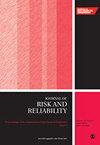Application of self-attention conditional deep convolutional generative adversarial networks in the fault diagnosis of planetary gearboxes
IF 1.8
4区 工程技术
Q3 ENGINEERING, INDUSTRIAL
Proceedings of the Institution of Mechanical Engineers Part O-Journal of Risk and Reliability
Pub Date : 2023-01-12
DOI:10.1177/1748006x221147784
引用次数: 1
Abstract
The Generative Adversarial Network (GAN) can generate samples similar to the original data to solve the problem of fault sample imbalance in planetary gearbox fault diagnosis. Most of models rely heavily on convolution to model the dependencies across feature vectors of vibration signals. However, the characterization ability of convolution operator is limited by the size of convolution kernel and it cannot capture the long-distance dependence in the original data. In this paper, self-attention is introduced into Conditional Deep Convolutional Generative Adversarial Networks (C-DCGAN). In the model, vibration features are dynamically weighted and merged, so that it can adaptively focus “attention” on different times to solve the problem of sample differences caused by time-varying vibration signals. Finally, the proposed method is verified on the planetary gearbox experiment and the quality of the generated signal samples is evaluated with Dynamic Time Warping (DTW) algorithm. The visual experimental results indicated that the proposed model performed better than conditional deep convolutional generative adversarial networks (C-DCGAN) and could accurately diagnose various working states of planetary gearboxes.自关注条件深度卷积生成对抗网络在行星齿轮箱故障诊断中的应用
生成对抗网络(GAN)可以生成与原始数据相似的样本,解决行星齿轮箱故障诊断中故障样本不平衡的问题。大多数模型严重依赖于卷积来模拟振动信号特征向量之间的依赖关系。然而,卷积算子的表征能力受到卷积核大小的限制,无法捕捉原始数据中的远距离依赖关系。将自注意引入到条件深度卷积生成对抗网络(C-DCGAN)中。在模型中,对振动特征进行动态加权和合并,使其能够自适应地将“注意力”集中到不同的时间,解决了振动信号时变导致的样本差异问题。最后,通过行星齿轮箱实验验证了该方法的有效性,并利用动态时间翘曲(Dynamic Time warp, DTW)算法对生成的信号样本质量进行了评价。视觉实验结果表明,该模型优于条件深度卷积生成对抗网络(C-DCGAN),能够准确诊断行星齿轮箱的各种工作状态。
本文章由计算机程序翻译,如有差异,请以英文原文为准。
求助全文
约1分钟内获得全文
求助全文
来源期刊

Proceedings of the Institution of Mechanical Engineers Part O-Journal of Risk and Reliability
ENGINEERING, MULTIDISCIPLINARY-ENGINEERING, INDUSTRIAL
CiteScore
4.50
自引率
19.00%
发文量
81
审稿时长
6-12 weeks
期刊介绍:
The Journal of Risk and Reliability is for researchers and practitioners who are involved in the field of risk analysis and reliability engineering. The remit of the Journal covers concepts, theories, principles, approaches, methods and models for the proper understanding, assessment, characterisation and management of the risk and reliability of engineering systems. The journal welcomes papers which are based on mathematical and probabilistic analysis, simulation and/or optimisation, as well as works highlighting conceptual and managerial issues. Papers that provide perspectives on current practices and methods, and how to improve these, are also welcome
 求助内容:
求助内容: 应助结果提醒方式:
应助结果提醒方式:


